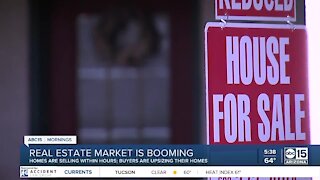How To Protect Yourself At The Top of the Multifamily Real Estate Market
Everyone, from the major national mortgage brokers to Kiplinger Magazine, are all saying the same thing: 2019 is still a hot market. Cheap debt and plenty of investor cash looking for returns in the multifamily market have supported the increased property values in recent years.
If you are buying multifamily, you are probably seeing cap rate compression - where cap rates were usually in the high 7’s are now in the low 6’s - and deals are still selling fast. There is chatter of an economic slowdown, but we are not seeing it yet. I’m not sure about the exact “when”, but as long as you remain conservative in your underwriting and buy for cash flow, you should be good.
Regardless, it’s a good time to think about how to protect yourself in case your respective market is at its peak.This means, continue buying for cash flow and not appreciation as I have covered in my previous material, optimizing the cash flow of your existing assets and picking up major rehab projects that are not risky to you or your investors. Here are five considerations to think about:
1) Always Be Active: This means not sitting by the sidelines or waiting for the cycle to drop. It just means you need to look for deals that make sense. In every market, there are always deals. If you are actively engaged with local brokers, attending meetups, and talking to other real estate pros, you will find deals.
2) Focus on the Cashflow: As the economic cycle rolls off its peak and begins its decline, active investors will see the value of their property ratchet down. What you need to remember is that as long as you have annual leases and you are treating the tenants right, you should cashflow just fine. That paper loss is only experienced if you sell the property. Keep your operations tight, make sure you have good financing in place and make sure the deal cashflows.
3) Put Liquid Cash in Illiquid Assets: The wealthy know that real estate is a safe haven when a bear market hits. Like I mentioned in the previous point, the primary concern for investors is returns. Many of these investors understand that owning multifamily properties financed with fixed-rate debt and increasing rents over time will perform very well in an inflationary period. There has been case study after case study on how cash-producing real estate has outperformed the stock market. The point is, if you’re committed to a buy-and-hold strategy, investing in cashflowing multifamily real estate in anticipation of a bear market will protect your net worth. Just make sure that the property has a diverse employer base with some history of making it through previous economic slowdowns.
4) People Still Need Shelter: For those of you that have lived through a recession, you know that jobs and businesses disappear. It never hits just one sector. A local economy will contain businesses that are dependent on others for commerce. Meaning, a local 500-person call center has people that go to the local gas station for fuel, the restaurant next door for lunch and the electronics shop up the street to buy a new phone. When a recession hits, all this stops. The call center vacates and all those businesses are negatively impacted as well. But just because the businesses are gone, it doesn’t mean the people are gone.
Those people still need a place to live. As we saw in 2008 and previous recessions, people turn to renting to stay mobile and reduce their overall “real estate footprint” because of a job loss or their homes foreclosed on by the banks that actually stopped lending. It’s worth noting that during these recessions, multifamily real estate foreclosures were very low and occupancy was steady or even increased between 2008 and 2010 according to the U.S. Census bureau and DataQuick.
5) Cranes in the Air, Buyers Beware: This is in reference to the oversupply in a market. Rental rates and sale prices rise when inventory is tight. In previous U.S. recessions, new multifamily construction in many markets just stopped. So, new construction lagged behind population growth - especially since new construction is mainly Class A property in primary markets with all the amenities. With the market flooded with new supply, it's clear that there is a supply/demand imbalance that will take years to be absorbed by the local market. Be aware of the rental rates these new units are commanding. If they are having a tough time filling them, it could be a sign of trouble.
As a real estate owner and operator for more than 15 years who made his way through recessions, the strategy that served me well is to either buy or turn around existing properties in well-located areas targeted to moderate-income renters. I like to hold my real estate for the long term and implement the planned increases as I go, making adjustments as needed. This has served me well in the past and I expect the same in the future.
-
 26:21
26:21
The Benelli Prepper
3 years ago $0.01 earnedHow to Protect Yourself Online
64 -
 13:08
13:08
yschaefer
3 years ago $0.01 earnedTodays Market | Uncommon Wisdom Real Estate Insights
45 -
 7:31
7:31
bulletproofcashflow
3 years ago $0.01 earned4 Powerful Tax Advantages of Multifamily Real Estate
242 -
 4:19
4:19
Corey Chambers
3 years agoDecember 2020 Downtown Real Estate Market Report
38 -
 3:01
3:01
KNXV
3 years agoReal estate market is booming amid pandemic
26 -
 0:37
0:37
KTNV
3 years agoReal estate market bouncing back
25 -
 2:09
2:09
WKBW
3 years agoProtect yourself from porch pirates
354 -
 23:34
23:34
gmdavisphotography
3 years agoLeveraging GIS to Market your Real Estate Assets
15 -
 3:18
3:18
WXYZ
3 years agoCOVID-19 and the real estate market
18 -
 1:44
1:44
WKBW
3 years agoHow to protect yourself from online shopping scams
43